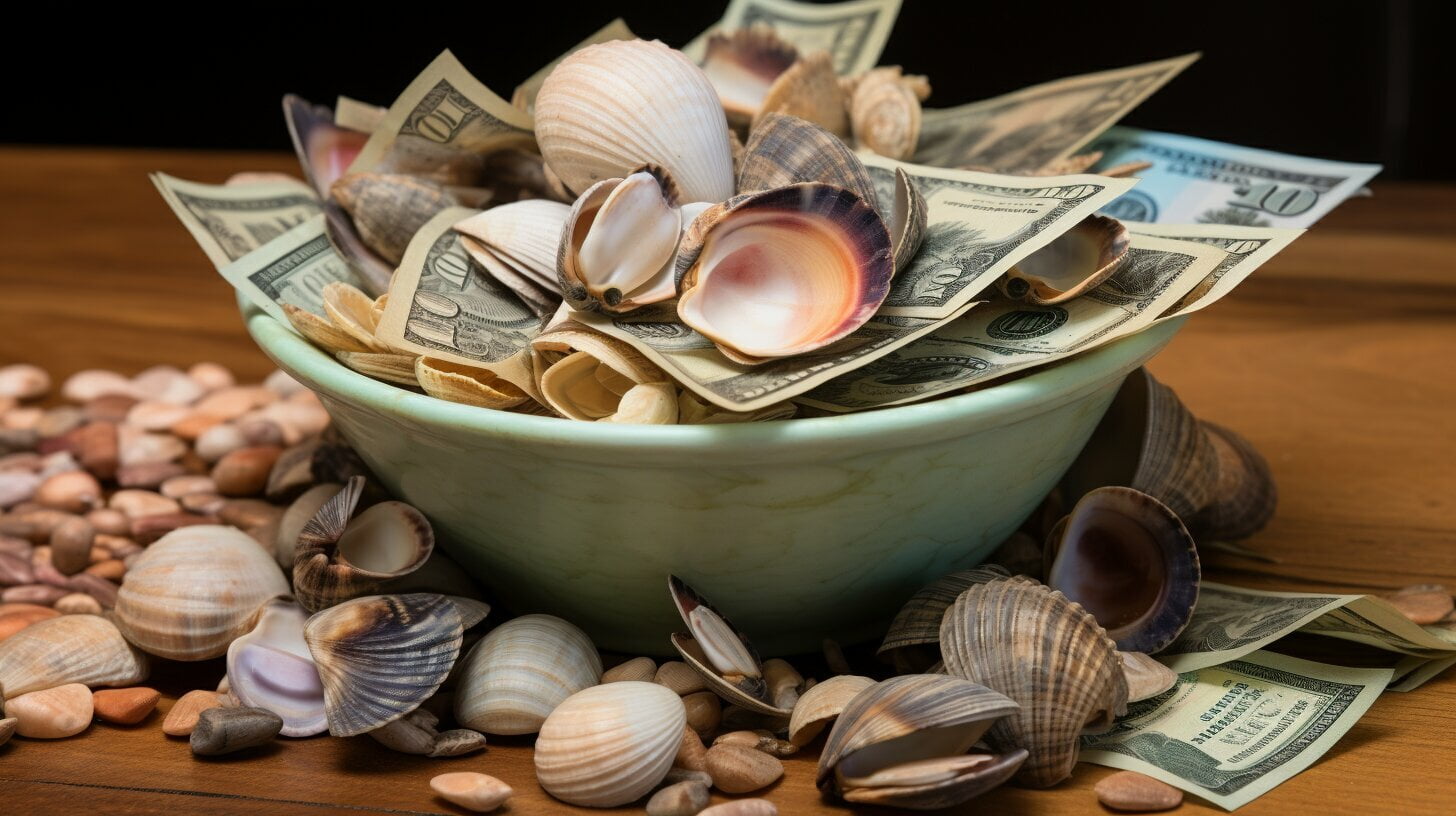Big Island Budget Bliss: How to Explore 🌺🏝️
Visiting the Big Island, Hawaii is an experience of a lifetime. From the sandy beaches to the breathtaking views, there is something for everyone. However, it can also be an expensive trip if not planned carefully. Managing your finances while on vacation is crucial to ensuring a stress-free and enjoyable trip. In this article, we will provide you with tips and tricks on how to set a budget, manage your expenses, save money on accommodations, dining, transportation, and enjoy activities without breaking the bank.
Key Takeaways:
- Money management is crucial while visiting the Big Island
- Setting a budget and tracking your expenses is vital for cost-effective travel
- Booking accommodations in advance, utilizing public transportation, and seeking out affordable dining options can save you money
- Exploring free or low-cost attractions and activities can be an excellent way to enjoy your trip without breaking the bank
Setting a Budget for your Big Island Trip
One of the most important aspects of managing your finances while visiting the Big Island is setting a realistic budget. Without a budget, it can be easy to overspend and run out of money before the end of your trip. Here are some tips for creating a budget that works for you:
Consider your expenses
Start by considering all the expenses you will have during your trip, including transportation, accommodations, food, and activities. Research the prices of each to give you an idea of how much you will need to spend.
Be realistic about your spending
Next, be realistic about how much you are willing and able to spend on each category. Consider what is most important to you and prioritize your spending accordingly. For example, if you are passionate about adventure activities, allocate more money towards excursions and less towards dining out.
Leave room for unexpected expenses
It’s always a good idea to leave some extra money in your budget for unexpected expenses. This could include emergency situations, souvenirs, or spontaneous activities that you decide to try while on the island.
Use technology to track your spending
Consider using a budgeting app or spreadsheet to track your spending throughout your trip. This will help you stay on top of your expenses and ensure that you are staying within your budget.
By setting a budget for your Big Island trip, you can avoid overspending and enjoy your vacation without financial stress. Stick to your budget and consider cost-saving strategies to make the most out of your trip.

Managing Expenses on the Big Island
If you’re looking to make the most of your Big Island trip without breaking the bank, smart money management is essential. Here are some practical tips for managing expenses while on the island:
- Track your spending: Keeping tabs on your expenses is a great way to stay on budget and avoid overspending. Use a budgeting app or simply jot down your expenses in a notebook to make sure you’re staying within your means.
- Prioritize activities: With so much to see and do on the Big Island, it can be tempting to try and do it all. However, by prioritizing your must-see activities, you can focus your spending and avoid wasting money on activities that aren’t as important to you.
- Use technology to save money: There are many apps and websites that offer discounts and deals on travel, dining, and activities. Do your research before you go and take advantage of these money-saving opportunities.

By following these tips, you can enjoy all that the Big Island has to offer without breaking the bank. And remember, a little bit of planning and smart spending can go a long way!
Saving Money on Accommodations
Accommodations can be one of the biggest expenses while traveling, but there are ways to save money. Consider booking during off-peak seasons when prices are lower. You can also save money by booking in advance. Look for deals and discounts on travel websites and with credit card rewards programs.
If you’re open to alternative lodging options, vacation rentals and hostels can be great cost-effective choices. Many vacation rentals offer kitchens, so you can cook your meals instead of eating out for every meal. Hostels are also great for budget-conscious travelers, with shared dormitory rooms or private rooms for a fraction of the cost of a hotel.
Before booking, read reviews from previous guests and research the neighborhood where the accommodation is located. If you’re willing to stay farther away from popular tourist areas, you can often find more affordable options.
| Tip | Description |
|---|---|
| Book in Advance | Booking accommodations early can save you money. Look for deals and discounts on travel websites and with credit card rewards programs. |
| Consider Alternative Options | Vacation rentals and hostels can be great cost-effective choices. Many vacation rentals offer kitchens, so you can cook your meals instead of eating out for every meal. Hostels are also great for budget-conscious travelers, with shared dormitory rooms or private rooms for a fraction of the cost of a hotel. |
| Read Reviews | Before booking, read reviews from previous guests and research the neighborhood where the accommodation is located. |

Dining on a Budget in Big Island
If you are looking to save money on your Big Island trip, dining is one area where you can make a significant impact on your expenses.
One of the best ways to enjoy affordable and delicious meals is to seek out local eateries. Not only will you experience authentic Hawaiian cuisine, but you will also support the local community. Look for small cafes, food trucks, and mom-and-pop shops for the best deals.
Trying affordable local specialties is also a great way to stay on budget. Many restaurants offer daily specials that feature local ingredients, such as fresh fish and tropical fruits. These dishes are not only tasty but also highlight the unique flavors of the Big Island.
Utilizing coupons or meal deals is another effective money-saving strategy. Look for coupons in local travel guides or online before your trip. Many restaurants also offer discounted meal options during certain times of the day, such as early bird specials or happy hour deals.
Another way to save money on dining is to prepare some meals on your own. If your accommodation includes kitchen facilities, consider buying groceries and cooking some meals yourself. This is a particularly good option for breakfast or lunch, which can be expensive when eating out.

By following these tips, you can enjoy delicious meals without breaking the bank on the Big Island.
Enjoying Activities without Breaking the Bank
Exploring the Big Island’s attractions and engaging in activities can be pricey, but there are ways to enjoy the island without breaking the bank. Here are some cost-effective travel tips to help you make the most of your trip without overspending:
- Research free or low-cost attractions: There are several free or low-cost things to do on the Big Island, such as hiking, visiting public beaches, and attending farmers’ markets. Plan your itinerary around these options to save money.
- Take advantage of discount offers: Many attractions and activities offer discounts on certain days or times. Do your research and plan accordingly to take advantage of these offers.
- Find coupon deals: Check local coupon books or websites for deals on tours, activities, and restaurants. You may even be able to find discounts on rental cars or lodging.
- Explore nature and beaches: Nature’s beauty is free to admire. You can pack a picnic and go to a beach while admiring its scenic view. Exploring natural wonders such as waterfalls, rain forests, and Volcanoes National Park should also be on your list.

- Consider offbeat activities: Try to participate in unique activities such as stargazing, attending community events, or visiting cultural landmarks. These can be interesting and free.
By following these tips, you can savor the Big Island’s charm while being mindful of your budget. Remember, the island’s natural beauty alone is worth the visit.
Money-Saving Transportation Tips on the Big Island
Transportation costs can quickly add up while exploring the Big Island, but there are several ways to save money and stay within your budget.
Renting a car can provide flexibility and convenience, but it can also be expensive. To save money, consider renting from a local company rather than a national chain and book in advance to secure the best rates.
Public transportation is a more affordable option, with buses and shuttles connecting popular destinations such as Hilo and Kona. Additionally, biking and walking can be a cost-effective way to explore local areas.
Ridesharing services such as Uber and Lyft are available on the Big Island and can provide a cheaper alternative to traditional taxis. Just be aware that there may be limited availability in some areas.
Planning Your Routes
Regardless of the transportation option you choose, it’s important to plan your routes in advance to minimize costs. Consider grouping activities together within the same area to reduce the need for additional trips.
If you do rent a car, be mindful of mileage limits and fuel costs. Fill up the tank at cheaper gas stations and avoid unnecessary detours.

By following these tips and being strategic with your transportation choices, you can save money and fully enjoy all that the Big Island has to offer.
Conclusion
Visiting the Big Island can be an incredible experience, but it’s essential to manage your money wisely to make the most of your trip. By setting a budget, tracking your expenses, and utilizing cost-saving strategies, you can enjoy all the island has to offer while sticking to your financial goals.
Remember to plan ahead
One of the most important things to keep in mind when traveling to the Big Island is to plan ahead. By researching accommodations, activities, and dining options in advance, you can take advantage of deals and discounts and avoid unexpected expenses.
Stick to a budget
Creating and sticking to a budget is crucial for keeping your expenses under control while on vacation. Be sure to factor in all your expected expenses and allocate funds accordingly. Consider using budgeting apps to help you stay on track.
Take advantage of cost-saving strategies
The Big Island offers numerous opportunities to save money without sacrificing fun or adventure. Consider alternative lodging options, seek out local dining spots, and take advantage of discounts and deals when available. By being mindful of your spending, you can maximize your experience without breaking the bank.
By following these tips and tricks for managing your money on the Big Island, you can enjoy all the island has to offer while staying within your budget. Remember to plan ahead, stick to your financial goals, and have fun exploring this beautiful destination.







